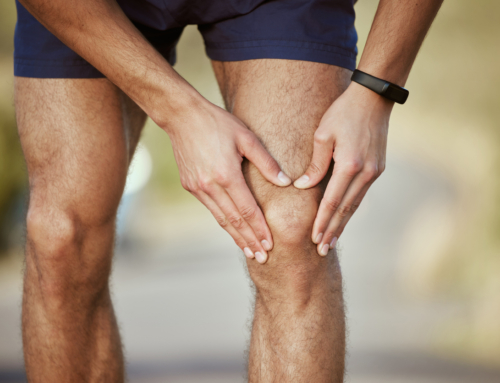At some point in our lives every person starts feeling some aches and pains.
If you sit a lot at work or have a bad bed you could feel some discomfort. Maybe you biked more than usual over the weekend or did more extreme gardening than expected.
Aches and pains are a signal and a message that something in your body’s neuromuscular system, alignment or internal body is off.
It’s your body tapping you on the shoulder and saying, “Hello, I’m here, please take care of me.”
Unfortunately for many bodies they get neglected and end up being injured or even worse, experiencing dis-ease.
How do we differentiate what’s a bad ache or pain? How do we know what to do for our bodies when aches and pains present themselves?
The first thing we need to do is educate ourselves on human design and begin to understand what’s potentially happening in our bodies when we feel discomfort.
It’s important to understand that there are many possible reasons we feel aches, pains or discomfort in our bodies. The first area of your lifestyle to assess is your diet.
The gut microbiome is a universe of good and bad bacteria that scientists know is doing more to maintain our healthy existence than ever perceived. Your sugar intake or eating foods that irritate your stomach could be the culprit for some of the aches and pains you’re feeling.
Your diet is a great place to start the feel-good process because it could prove to be extremely effective at helping you feel better in your body and the plus side is you often shift body composition. When I say “diet”, I’m including everything you consume.
This includes having quality water intake and not ingesting sugary drinks that kill good gut bacteria. If I had a dollar for every time a client was fatigued from dehydration or improper nutritional prep before a session, I would have a bunch of cash!
On the opposite side, if I had a dollar for every time a client experienced what I call nutritional strength I would have even more cash!
Nutritional strength is when you eat a clean diet with quality macronutrient portions and you feel lighter, have more mobility and feel stronger. The last element is knowing that it’s directly related to your nutrition. The only way to feel what I’m talking about is to test it!
The next biggest culprit for aches and pains is repetitive movement or sedentary patterns. Whatever you do over and over throughout your life is being tracked, adapted and being listened too by your body. If you tell it a 1000 times, you’re putting your bag on the right shoulder, it will listen! It will proceed to shift your rib cage and drop the opposite shoulder to counter balance. Eventually you’ll have neck pain and your obliques and quadradus laborum shorten. It does not matter what you are doing- if it’s repetitive, your body will adapt, for better or for worse!
Right now, I’m writing on my phone which I do often. If I hold the phone with my right pinky, my body is adjusting to the load of the phone. If I do it long enough, I will have issues in that pinky.
The message that I’m sharing with you in this article is the most important physical therapist, personal trainer and massage therapist you will ever have, is you!
Changing our repetitive habits is the best corrective exercise we can ever do. This does not mean we don’t take action with our workouts, quite the opposite.
Movement is the number one way to move beyond our aches and pains. To be more specific, I mean, movement of thought, body and spirit. How we think, move and perceive ourselves, experiences and the human journey are all extremely important and integral to feel good health.
In our Nimble Fitness functional strength and conditioning studios our process is mindset, nutrition, movement and recovery.
Every aspect of a training program helps with preventing injury, improving posture, helping one’s alignment and maintaining healthy energy. Aches and pains are intimately linked to the neuromuscular and neuro-fascial systems. Scientists have been studying the connection of pain and the myofascial system and discovering that discomfort in the neck could in fact be coming from compromised tissue or joint in the hip or ankle. That pain in the hip could be coming from dysfunction at the foot.
This story goes on and on with pain showing up in one area of the body but having its cause above or below the location of discomfort. Why is that? Leading facia pioneers believe it’s because the endless matrix of tissue can become compromised by injury, poor posture or repetitive patterns that can lead to dehydration or create scare tissue.
As one area becomes less functional and doesn’t elongate or stabilize optimally joints and bones don’t glide and slide the way they do in normal function. This can lead to pain and discomfort in areas that you would never think links to what you are experiencing.
The big question you might ask is “how does someone start to navigate moving beyond these aches and pains?”
Well, I have already shared a few big opportunities with you, but one of the best ways to maintain healthy fascia is through movement!
Our fascia is holding our entire architecture together and without it, we would simply be mush. Healthy movement helps maintain the matrix’s hydration, mobility, strength and overall integrity. This translates to better movement, less pain or discomfort, improved posture and elevated energy.
Most people have the aging mindset backwards. As they age, they think they are getting older instead of thinking they are getting younger.
Why do I feel we are getting younger as we age even though the number says the opposite?
It’s because I have been training clients one-on-one for twenty years and I’ve witnessed that as we grow older in age, we can grow younger in consciousness.
That mind, body and soul wisdom can be cultivated to maintain a youthful energy and function. The clients I work with that have the clearest intent and focused mindset are the ones most consistent with acting, feeling and being young.
I say being because having healthy habits is about consistency. The consistency is what creates the regeneration, strength and energy needed to feel vibrant. The path to self-compassion, care and challenge is a micro, meso and macro journey!
We have to play both the short and long game when living. Ultimately, it’s about life experiences and being present when being in them. Having aches and pains can hinder our ability to be present in life. They are often the body’s way of protecting us or giving us a message that something is wrong. It’s up to you to listen to the subtle aches and pains and to take action to feel better!
Namaste,
Daniel





